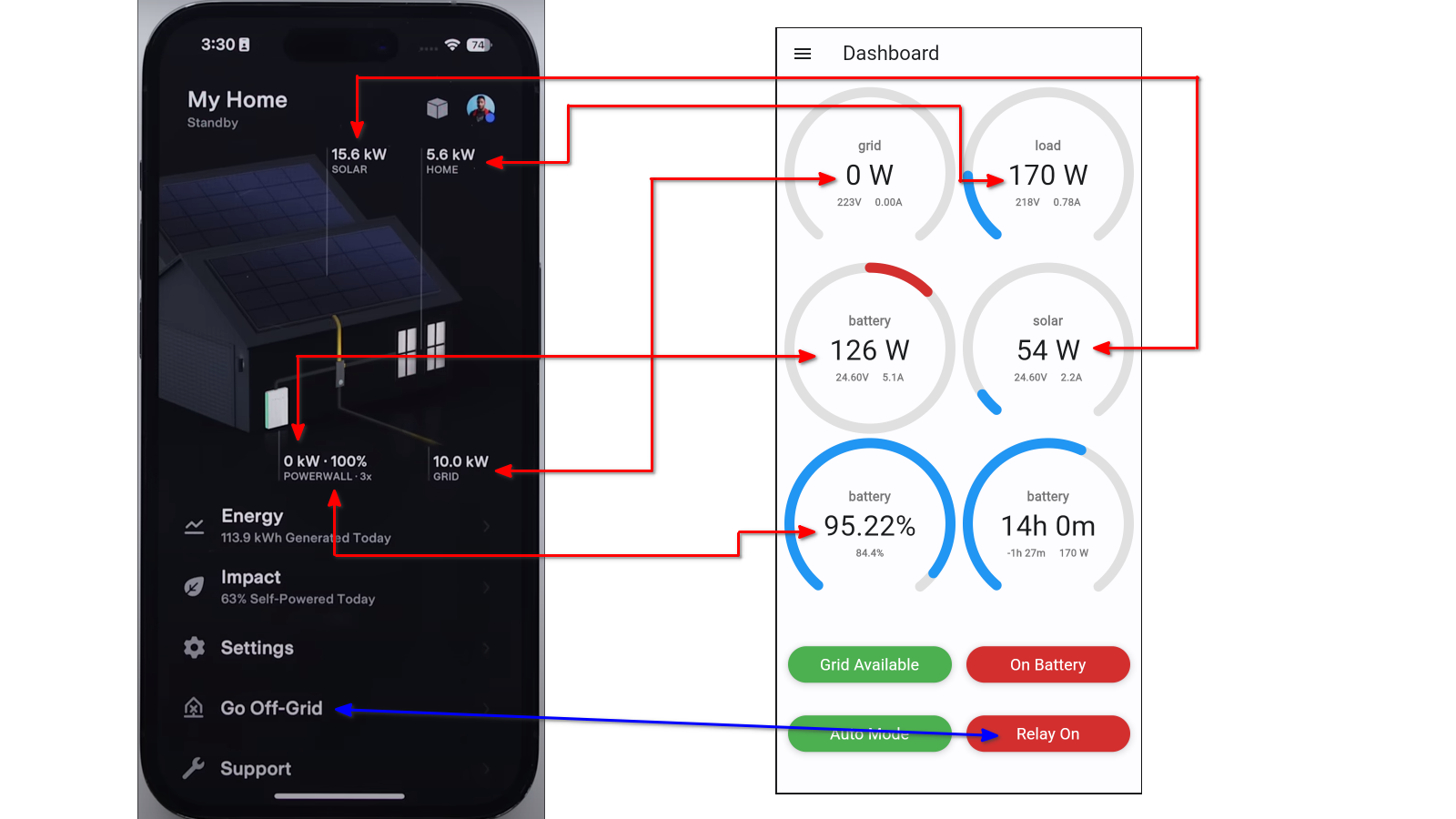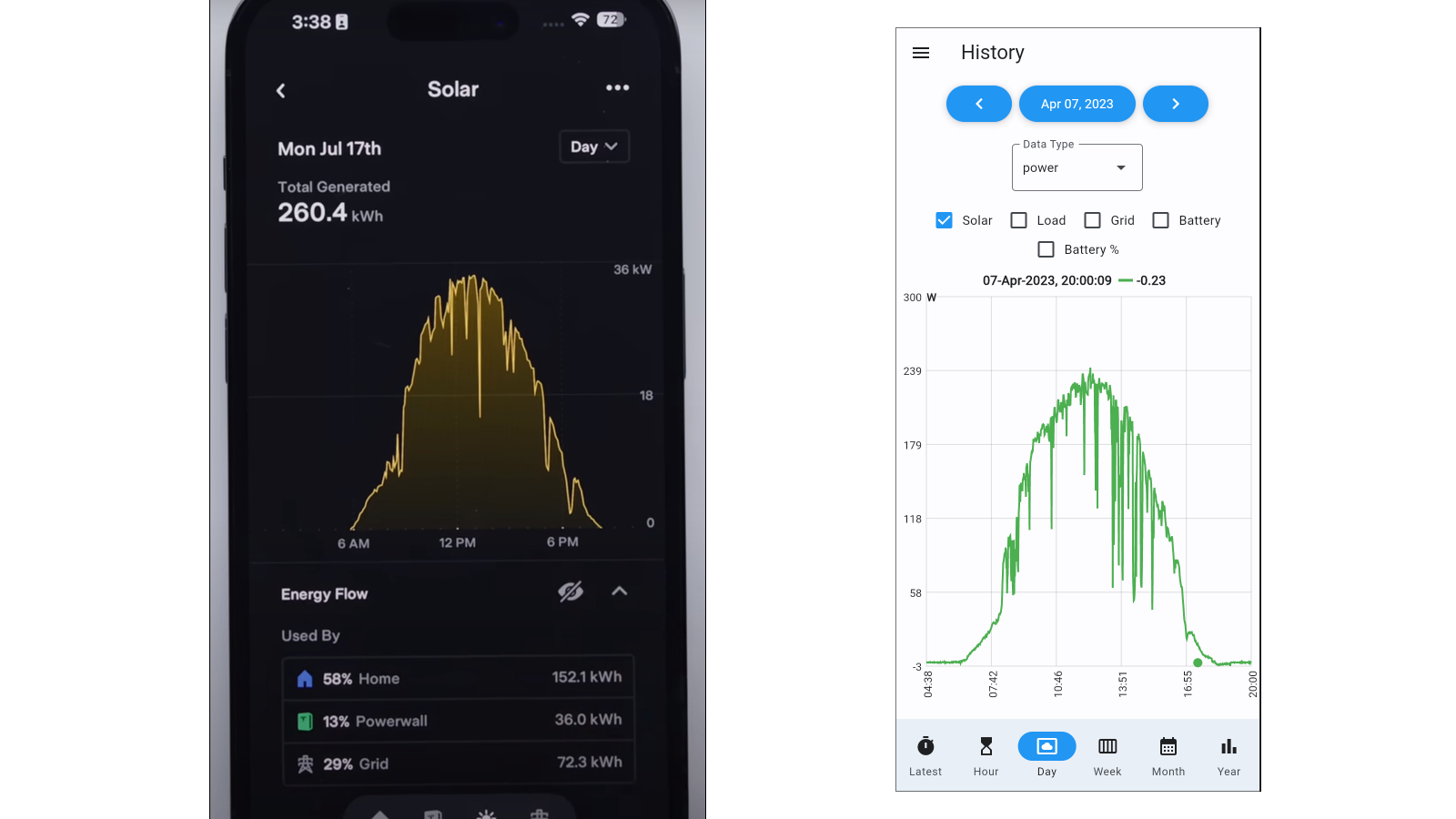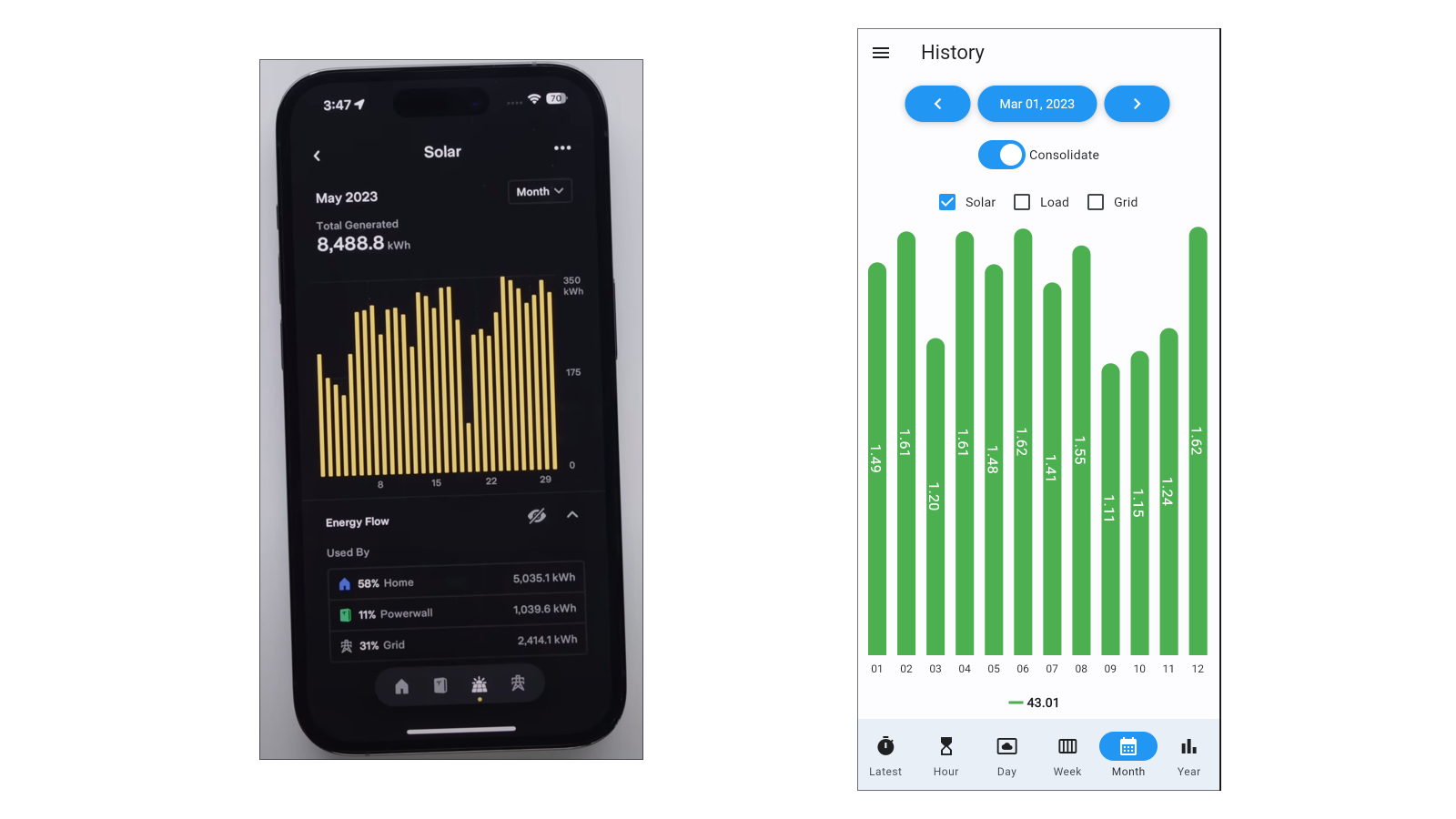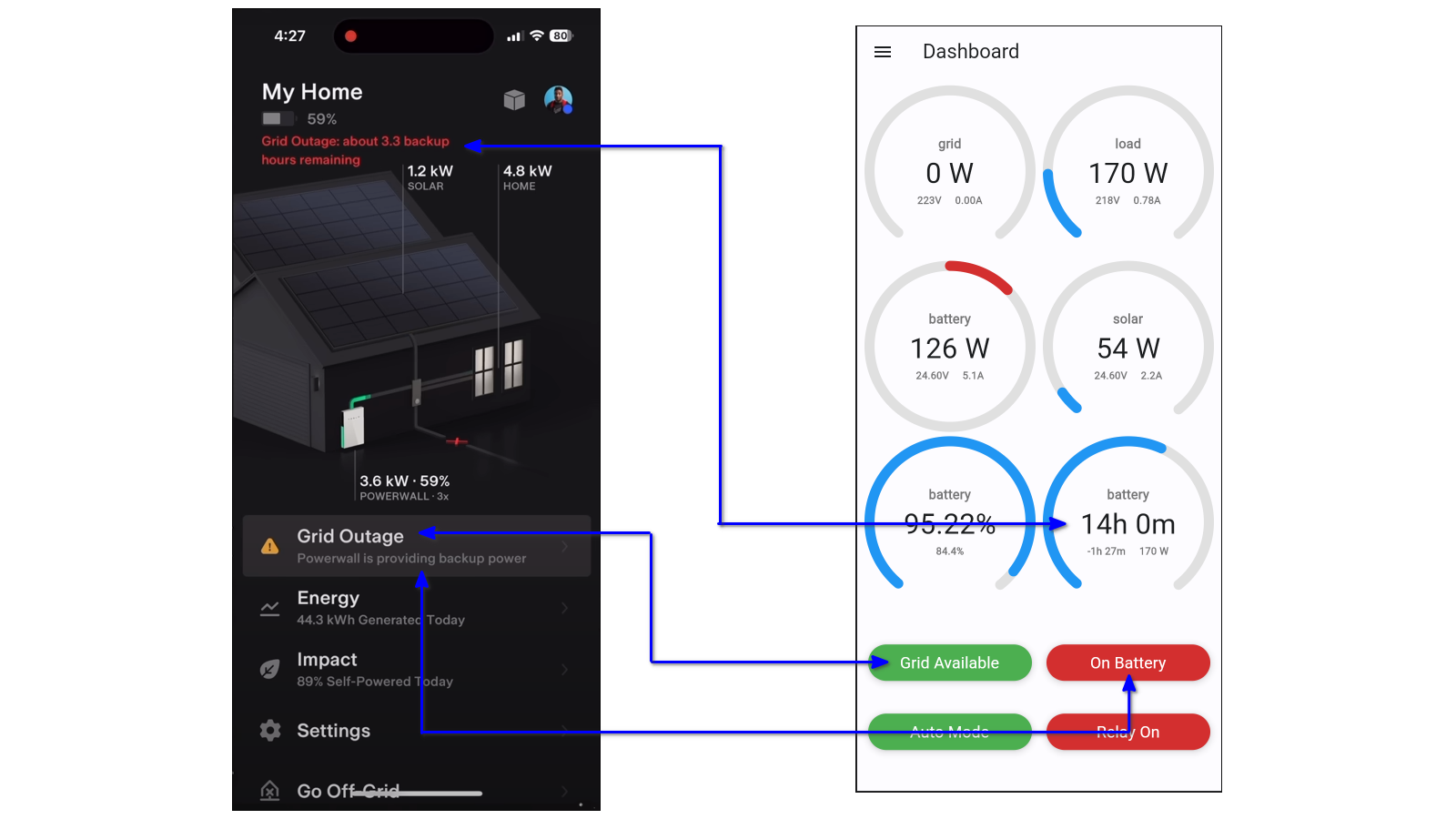Solar System Comparison with MKBHD
Some of you may already know MKBHD, a popular youtuber in the tech world. He recently posted a video about the going completely solar and not having to pay an electricity bill for a whole year. It is a very well made video which explains how the solar panel system works with batteries (off grid) and with net metering (on grid). Although I don’t have net metering and I am not completely off grid, so mine is a hybrid approach. Still, if you watch the video it will help you understand how my setup works (sort of). My setup is closer to the hybrid system explained in another video. Anyway, I wanted to compare my puny setup with MKBHD’s setup and see how I compare. So here goes.
He has an installed capacity of 29.313 KW solar panels while I have a 0.320 KW panel. That is just 1% of his setup and totally looks like a rounding off error :). Moving on, he has a 40.4 KWh battery pack where as I’ve got a 3.6 KWh battery pack which is about 9% of his capacity. This is a slightly better number.
Finally he has an app made by a bunch of engineers at Tesla and I have an app completely built from scratch by one person (me, incase you did not catch it). So that is puny too. But I can totally understand why MKBHD got stuck looking at the numbers in the app. I had the exact same feeling after I built the app and saw the numbers change every second, to minute, to hour, to throughout the day. It is fun to see how the numbers change as you increase the load or when the sun sets etc. It is just so much fun.
I was surprised by how much my app is very similar to the Tesla app (just not as fancy of course) although I have never seen or used their app. Here are some mappings from their app to mine.
One thing you will notice is how much more energy he is generating and using. For instance, for that particular day seen above, he is using around 5.6 KW, but even more interesting is that his solar panels are generating 15.6 KW and he is sending 10 KW to the grid because his batteries are fully charged. Those numbers are just insane. On the other hand, we were using 0.17 KW and generating 0.054 KW of solar power and the battery is being charged with 0.126 KW. Well, to be fair it is summer in the US and the AC is probably pulling a lot of power for MKBHD. But in the video he mentions that the lowest baseline for him is around 400W and for me that is about 70W.
Similarities between the Tesla app and my app can also be observed when he showed the daily history data. Again, my app just looks uglier, but it shows pretty much the same data :). Also his numbers are huge and mine are super small like before.
He mentions that on an absolute best day he managed to generate around 300 KWh where as my setup generated a maximum of 1.72 KWh. In winter his setup generates about 20-70 KWh which is less than one fourth of peak output. My setup does better generating a bit less than 50% of the peak periods.
There is a lot of interesting data that does not match up much with me because where I live (Bangalore), I don’t have the need to use AC during the summer nor do I need heating during winter. Naturally I have neither AC units or heaters. That is what I love about Bangalore. In addition MKBHD uses electric car which apparently runs less efficiently in winter than in summer. However, given the mild weather over here, I assume if I had an electric car, it would not be very different in summers and winters. The best month for MKBHD happens to be May and for me it is March.
He used 54,380 KHh of energy in one year which is 37 times as much energy as I used in a year! Of course he uses an electric car and needs air conditioning in the summer, neither of which I own. It cost MKBHD about $92K for the whole installation. Of course he went a bit overboard and installed solar roof tiles although he could have done with just solar panels. My setup cost me about Rs. 15K. He did some basic back of the envelope calculations and arrived at 9.6 years as the pay back period. In my case it will take about 5.3 years. The main difference is because I already had batteries and UPS otherwise it would be much worse.
The biggest satisfaction for me after watching the video was that the app and hardware that I built almost matched with what MKBHD owns coming from a big company. Even including small details such as how long my battery will last when the grid is down. Now that is pretty cool.





